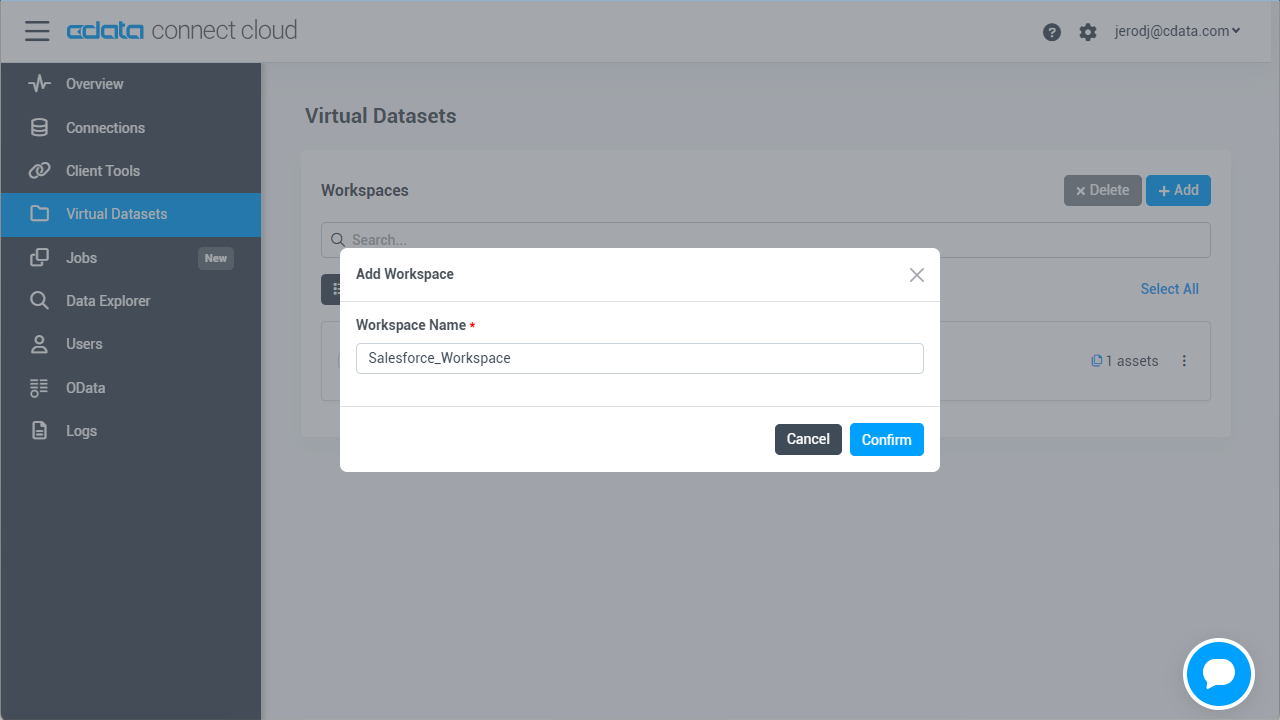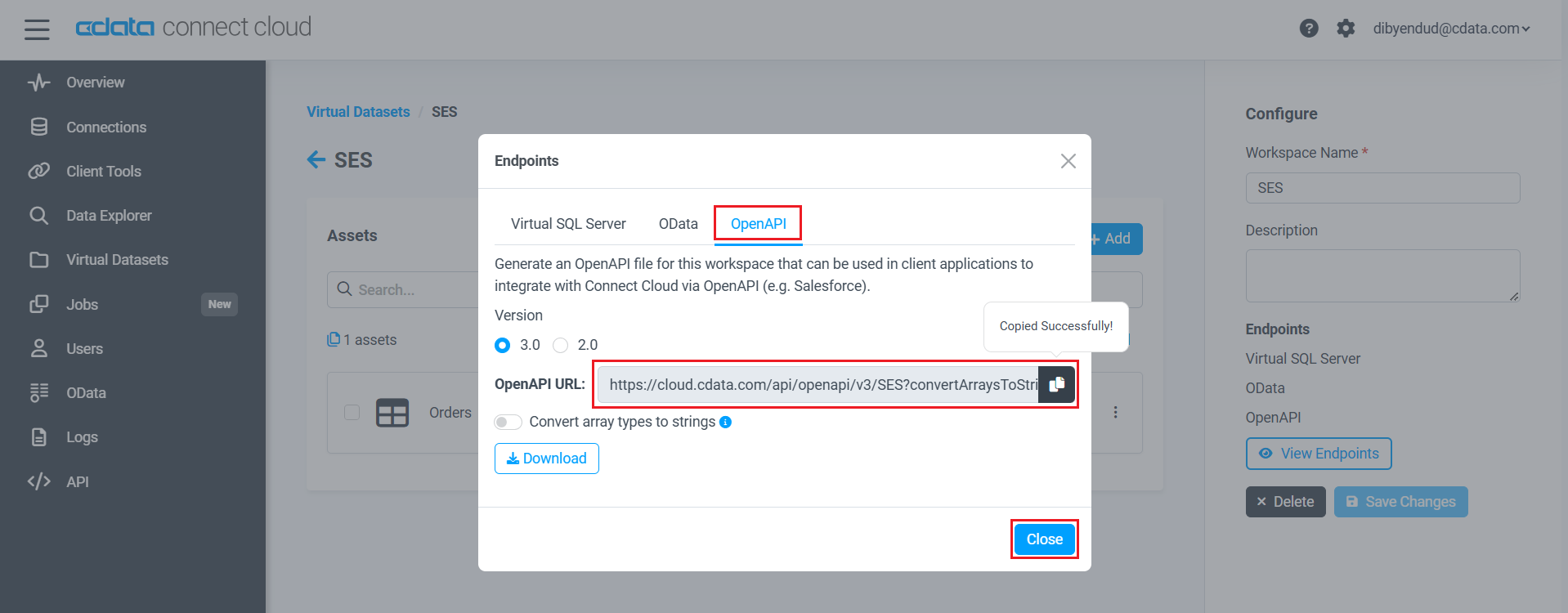Discover how a bimodal integration strategy can address the major data management challenges facing your organization today.
Get the Report →Connect to Dynamics 365 Data through External Services in Salesforce
Use CData Connect Cloud to securely provide OData feeds of Dynamics 365 data to smart devices and cloud-based applications. Use the CData Connect and Salesforce Connect to create Dynamics 365 Data objects that you can access from apps and the dashboard.
CData Connect Cloud, enables you to access Dynamics 365 data from cloud-based applications like the Salesforce console and mobile applications like the Salesforce Mobile App. In this article, you will use CData Connect Cloud to access Dynamics 365 data through Salesforce External Services.
About Dynamics 365 Data Integration
CData simplifies access and integration of live Microsoft Dynamics 365 data. Our customers leverage CData connectivity to:
- Read and write data in the full Dynamics 365 ecosystem: Sales, Customer Service, Finance & Operations, Marketing, and more.
- Extend the native features of Dynamics CRM with customizable caching and intelligent query aggregation and separation.
- Authenticate securely with Dynamics 365 in a variety of ways, including Azure Active Directory, Azure Managed Service Identity credentials, and Azure Service Principal using either a client secret or a certificate.
- Use SQL stored procedures to manage their Dynamics 365 entities - listing, creating, and removing associations between entities.
CData customers use our Dynamics 365 connectivity solutions for a variety of reasons, whether they're looking to replicate their data into a data warehouse (alongside other data sources)or analyze live Dynamics 365 data from their preferred data tools inside the Microsoft ecosystem (Power BI, Excel, etc.) or with external tools (Tableau, Looker, etc.).
Getting Started
Connect to Dynamics 365 from Salesforce
To work with live Dynamics 365 data in Salesforce Connect, we need to connect to Dynamics 365 from Connect Cloud, provide user access to the connection, and create OData endpoints for the Dynamics 365 data.
(Optional) Add a New Connect Cloud User
As needed, create Users to connect to Dynamics 365 through Connect Cloud.
- Navigate to the Users page and click Invite Users
- Enter the new user's email address and click Send to invite the user
![Inviting a new user]()
- You can review and edit users from the Users page
![Connect Cloud users]()
Add a Personal Access Token
If you are connecting from a service, application, platform, or framework that does not support OAuth authentication, you can create a Personal Access Token (PAT) to use for authentication. Best practices would dictate that you create a separate PAT for each service, to maintain granularity of access.
- Click on your username at the top right of the Connect Cloud app and click User Profile.
- On the User Profile page, scroll down to the Personal Access Tokens section and click Create PAT.
- Give your PAT a name and click Create.
![Creating a new PAT]()
- The personal access token is only visible at creation, so be sure to copy it and store it securely for future use.
Connect to Dynamics 365 from Connect Cloud
CData Connect Cloud uses a straightforward, point-and-click interface to connect to data sources.
- Log into Connect Cloud, click Connections and click Add Connection
![Adding a Connection]()
- Select "Dynamics 365" from the Add Connection panel
![Selecting a data source]()
-
Enter the necessary authentication properties to connect to Dynamics 365.
Edition and OrganizationUrl are required connection properties. The Dynamics 365 connector supports connecting to the following editions: CustomerService, FieldService, FinOpsOnline, FinOpsOnPremise, HumanResources, Marketing, ProjectOperations and Sales.
For Dynamics 365 Business Central, use the separate Dynamics 365 Business Central driver.
OrganizationUrl is the URL to your Dynamics 365 organization. For instance, https://orgcb42e1d0.crm.dynamics.com
![Configuring a connection (NetSuite is shown)]()
- Click Create & Test
- Navigate to the Permissions tab in the Add Dynamics 365 Connection page and update the User-based permissions.
![Updating permissions]()
Create an OpenAPI File for Dynamics 365
After connecting to Dynamics 365, create a workspace and virtual dataset for your desired table(s).
- Navigate to the Virtual Datasets page and click Add to create a new Workspace (or select an existing workspace).
![The Virtual Datasets page.]()
![Adding a new Workspace.]()
- Click Add to add new assets to the Workspace.
- Select the Dynamics 365 connection (e.g. Dynamics3651) and click Next.
![Selecting an Asset.]()
- Select the table(s) you wish to work with and click Confirm.
![Selecting Tables.]()
- Configure the Open API options:
- Set Version to "3.0"
- Set Convert array types to strings to off
![Configuring the Open API options.]()
- Click Download to download the OpenAI JSON file.
With the connection configure and OpenAPI file downloaded, you are ready to connect to Dynamics 365 data from Salesforce External Services.
Connect to Dynamics 365 Data as an External Service
Follow the steps below to connect to the OpenAPI produced by Connect Cloud.
- Log into Salesforce and navigate to Salesforce Setup.
- Select Platform Tools -> Integrations -> External Services.
![Selecting External Services.]()
- Click Add an External Service.
- Click Select an API source from API Specification and click Next.
- In Provide Registration Details, enter the following:
- External Service Name — an identifying name for your external service.
- Description — a description of your external service.
- Service Schema — select Upload from local.
- Select a Named Credential — select the named credential you created.
- Upload the JSON file you downloaded from CData Connect.
- If the schema validation was successful, click Save & Next.
The next step is Select Operations. These operations are all the actions of the connector that are contained in the OpenAPI specification file. The actions include all the functions you need for the table, including list, get, create, update, and delete records. The actions include a description, input parameters, and output parameters.
![Adding an external service.]()
The input parameters are appended to the URL, such as $top, $filter, and $orderby. See API Operations for a complete parameter reference. The input parameters are based on OData filtering.
Select the operations you want to include in the external service.
- Review the actions for your external service, including the input and output parameters. If you need to change input or output parameters, you need to edit the OpenAPI specification file.
![Actions available based on the OpenAPI specification file.]()
- Click Finish. Your external service appears in the list of external services for Salesforce and is now available to build flows.
Simplified Access to Dynamics 365 Data from Cloud Applications
At this point, you have a direct, cloud-to-cloud connection to live Dynamics 365 data from Salesforce. For more information on gaining simplified access to data from more than 100 SaaS, Big Data, and NoSQL sources in cloud applications like Salesforce, refer to our Connect Cloud page.




















